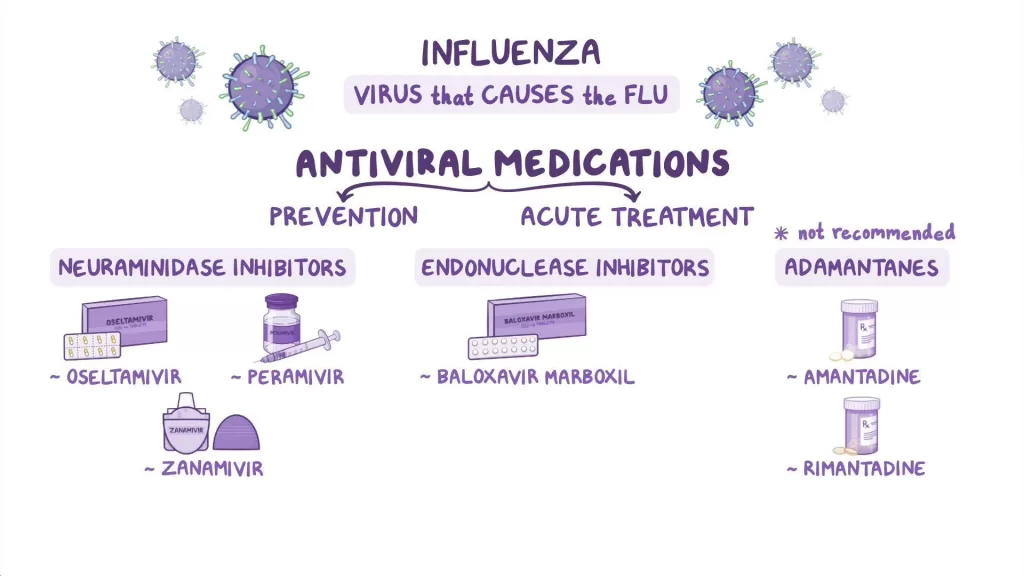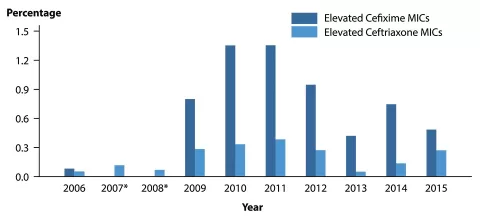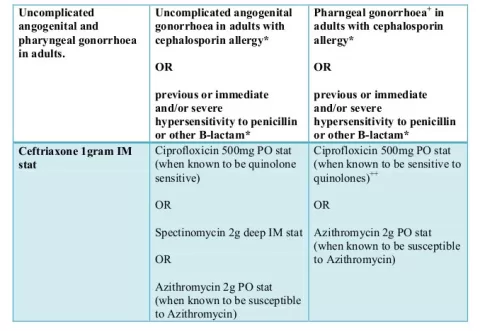Antivirals for non-severe flu have garnered attention as potential treatment options for patients with influenza, particularly in years where vaccinations may not provide full protection. Recent studies, however, reveal a lack of significant efficacy in terms of reducing hospital admissions or mortality associated with influenza infections. For instance, oseltamivir (Tamiflu) and baloxavir (Xofluza) showed only marginal improvements in symptom duration, leading to question their overall benefit. This has sparked discussions surrounding the importance of the influenza vaccine as the primary preventive measure against flu-related complications. While antivirals can shorten the duration of symptoms, their role in severe outcomes like hospital admissions remains minimal, highlighting the critical importance of effective vaccination strategies in flu prevention.
In recent years, researchers have increasingly investigated antiviral medications for mild influenza cases, assessing their role and effectiveness in treatment. The discussion surrounding antiviral drugs such as oseltamivir and baloxavir often focuses on their potential to alleviate symptoms rather than their ability to prevent severe health outcomes. Despite their limited impact on critical situations like hospitalization or death, these medications might still serve a purpose in reducing the duration of flu symptoms. As the conversation around influenza treatment evolves, it is crucial to emphasize the necessity of vaccinations as a core defense mechanism against the flu. Understanding the interplay of antivirals and vaccination can guide both patients and healthcare practitioners in making informed health decisions.
The Efficacy of Antivirals for Non-Severe Flu
Recent analyses have highlighted the limited efficacy of antivirals for managing non-severe influenza cases. Despite prescriptions for antivirals like oseltamivir (Tamiflu) and baloxavir (Xofluza), studies show these medications do little to affect hospital admissions or mortality rates among patients. With findings indicating that less than 2 patients per 1,000 experience fatal outcomes, it raises the question of whether the use of antivirals within this demographic is justified. The primary value of these drugs appears to be in symptom relief, rather than substantial improvement in serious flu outcomes.
Headlining this concern is a comprehensive review encompassing 73 randomized controlled trials, revealing that while patients taking antivirals may enjoy a slight decrease in symptom duration—approximately 0.75 days for oseltamivir and 1.02 days for baloxavir—the lack of significant effect on hospitalization is troublesome. Experts suggest that the role of antivirals in treating non-severe influenza infections be reevaluated, particularly as resistance rates for some medications like baloxavir rise, complicating treatment strategies further.
Oseltamivir Effectiveness: A Closer Look
Oseltamivir, widely known as Tamiflu, has long been a front-line treatment for influenza, yet its effectiveness has come under scrutiny based on recent findings. While designed to shorten symptoms and improve recovery rates, the evidence suggests that it may not lower severe outcomes such as hospital admissions or mortality. Patients taking oseltamivir reported improved symptom resolution time; however, the overall impact appears minimal when addressing the more alarming complications of influenza.
Moreover, the data indicates an increase in adverse effects related to oseltamivir use when compared to standard care. With 9.97% of patients on baloxavir showing resistance, scrutinizing the balance between benefit and risk associated with antiviral therapies is essential. This leaves healthcare providers pondering whether they should maintain reliance on oseltamivir or prioritize alternative strategies, including seasonal influenza vaccinations that remain critical in mitigating flu-related complications.
The Importance of Vaccination Against Influenza
Vaccination remains the cornerstone of influenza prevention, particularly in a landscape where antivirals show limited efficacy for non-severe cases. The consensus among healthcare professionals is that immunization offers the best defense against influenza, significantly reducing the risk of complications and hospitalizations. Despite advancements in antiviral treatments, the significance of the flu vaccine cannot be overstated, especially given the alarming rates of unvaccinated populations during recent flu seasons.
The analysis from the Mayo Clinic reinforces the notion that while antivirals may play a role in managing symptoms, they should not overshadow the crucial advantage offered by flu vaccinations. Individuals who receive the influenza vaccine are better positioned to avoid severe outcomes associated with the virus. As the healthcare community advocates for widespread vaccination, the integration of antiviral medications should be approached with careful consideration, ensuring they complement rather than replace preventive measures.
Influenza-Related Hospital Admissions: Trends and Insights
Insights from ongoing influenza research suggest that the rates of hospital admissions due to flu have not significantly declined, even with the availability of antiviral treatments. The analysis indicated occurrences as low as 21 admissions per 1,000 patients treated with antivirals, questioning the effectiveness of these medications as a primary treatment strategy for non-severe cases. Public health experts worry that the persistence of these trends could lead to increased pressure on healthcare systems during peak flu seasons.
Further, the broader implications of these admission rates point toward a need for more effective public health strategies. As hospital admissions remain low but persistent, it highlights the critical role of preventive measures, especially vaccination, in combating the flu. By promoting vaccination campaigns and public awareness about the limited role of antivirals in reducing severe outcomes, the healthcare sector can work toward better management of influenza-related health crises.
Antivirals: A Double-Edged Sword in Influenza Treatment
The introduction of antiviral medications has undoubtedly changed the landscape of influenza treatment; however, the recent findings suggest a more nuanced role for these drugs. While they can provide symptom relief, the lack of impact on severe outcomes like hospitalizations indicates a potential misalignment in treatment expectations. This situation creates a double-edged sword: patients may seek antivirals in hopes of quick recovery, while data suggests that vaccines should still be the primary defense.
Moreover, resistance concerns associated with antivirals such as baloxavir underscore the critical need for developing effective flu vaccines that can outpace circulating strains. As more viruses develop resistance, understanding the limitations of current antiviral treatments becomes crucial in guiding healthcare policy and practice. Thus, strengthening preventative measures through vaccination should always take precedence in public health recommendations.
Baloxavir vs. Oseltamivir: A Comparative Analysis
When comparing baloxavir and oseltamivir, each drug presents unique pros and cons that healthcare providers must consider when treating influenza. Baloxavir has emerged as a promising alternative, showing potential advantages in effectiveness and tolerability in the treatment landscape. However, resistance observed in nearly 10% of cases raises alarms about its long-term viability similar to the concerns surrounding oseltamivir, as both require more thorough evaluation to enhance their clinical use.
Both antivirals serve to alleviate symptoms associated with influenza; however, their limited efficacy in preventing serious complications complicates treatment decisions. Baloxavir’s recent introduction presents an exciting opportunity for further research, but with mounting resistance issues from patients opting for rapid recovery, the use of these medications must be cautiously integrated with efficacious influenza vaccination strategies.
The Interplay of Antivirals and Vaccines in Flu Management
The relationship between antiviral medications and influenza vaccines is intricate; while both play roles in flu management, their functions are fundamentally different. Vaccines aim to prevent the onset of influenza, while antivirals are primarily designed for those afflicted by the virus. This distinction is pivotal as health organizations consider strategies that maximize public health, emphasizing preventative measures through vaccination to reduce illness severity and related hospitalization rates.
Furthermore, as the data indicates little effect of antivirals on preventing severe flu outcomes, it reinforces the importance of maintaining a robust vaccination program. Emphasizing the synergy between antivirals and vaccines can optimize patient outcomes, transforming the narrative around flu treatment from one of reactive antiviral use to a proactive, preventive approach prioritizing immunization and public health education.
Research Directions in Influenza Antiviral Efficacy
Current research directions in the field of influenza treatment are increasingly focused on understanding the nuances of antiviral efficacy. Recent studies have opened the floor to critical discussions around the actual benefits of antivirals for non-severe cases, leading to reevaluation by the healthcare community into alternative treatments or adjusted recommendations. This evolving landscape highlights the need for continued research into both antiviral resistance and the potential for new therapeutic agents.
Moreover, the analysis underscores the importance of pursuing innovative vaccines, as existing antivirals may not offer substantial protection against severe flu outcomes—a gap that new research could aim to fill. As the global health community searches for solutions, refining antiviral use and enhancing vaccination efforts will be paramount in effectively managing influenza and its complications.
Patient Education Regarding Antiviral Treatments
Educating patients on the role of antiviral treatments in managing influenza is vital as they navigate treatment options and seek relief during flu season. Awareness about the limits of antivirals in preventing complications or hospitalizations should be emphasized, empowering patients to make informed decisions regarding their health. This education can help mitigate the overreliance on antiviral prescriptions, emphasizing the importance of preventative measures such as vaccination.
Furthermore, healthcare professionals should prioritize clear communication about the expected benefits and potential side effects of antiviral medications. This can foster a better patient-provider dialogue, ensuring that individuals receive both accurate information and appropriate care tailored to their circumstances, ultimately leading to improved health outcomes and reduced flu-related morbidity.
Frequently Asked Questions
What are the effects of antivirals for non-severe flu on hospital admissions and mortality?
Recent analyses indicate that antivirals for non-severe flu, including oseltamivir, do not significantly reduce the risk of hospital admissions or mortality. Studies show that fewer than 2 out of 1,000 patients experienced flu-related death, and only 21 per 1,000 were admitted to the hospital, suggesting limited efficacy of antivirals for severe outcomes.
How effective is oseltamivir for symptom relief in non-severe influenza?
Oseltamivir, an antiviral used to treat non-severe influenza, has been shown to slightly reduce the duration of flu symptoms by about 0.75 days. While its ability to reduce hospital admissions or deaths is minimal, those taking oseltamivir do experience a quicker resolution of flu symptoms.
Is there any advantage of baloxavir over oseltamivir in treating the flu?
Baloxavir, another antiviral for non-severe flu, has demonstrated a slightly greater efficacy in reducing symptom duration compared to oseltamivir, with an average reduction of 1.02 days. Additionally, it is better tolerated, although there is a noted 9.97% resistance rate among users of baloxavir.
Why is the influenza vaccine considered essential despite the availability of antivirals?
The influenza vaccine remains crucial as the first line of defense against flu. Research highlights that antivirals like oseltamivir and baloxavir do not significantly prevent serious outcomes such as hospitalization or death. Vaccination is essential to lower the risk of severe flu and associated complications.
How common are treatment-related adverse events with oseltamivir compared to other flu treatments?
Studies have found that oseltamivir is associated with more treatment-related adverse events compared to standard care or placebo. In contrast, baloxavir does not increase the instance of adverse events, making it potentially a safer alternative, despite its resistance issues.
What are the implications of antiviral resistance in flu treatment?
The development of resistance, particularly noted in patients treated with baloxavir, can diminish the effectiveness of antivirals for upcoming flu seasons. Monitoring and addressing antiviral resistance is essential to ensure effective treatment options remain available for non-severe influenza.
| Key Point | Details |
|---|---|
| Effectiveness of Antivirals | Antivirals for non-severe influenza do not decrease hospital admissions or mortality, even though they may slightly reduce symptom duration. |
| Analysis Overview | The analysis included 73 randomized controlled trials, primarily focusing on oseltamivir (Tamiflu). Findings showed that serious influenza-related outcomes were infrequent. |
| Symptom Resolution | Patients taking oseltamivir experienced symptom resolution 0.75 days sooner, while those treated with baloxavir cleared symptoms 1.02 days faster. |
| Adverse Events | More treatment-related adverse events were observed in oseltamivir groups compared to placebo, whereas baloxavir showed lower adverse events but noted a 9.97% resistance rate. |
| Vaccination as Primary Defense | Vaccination remains the primary strategy against influenza, with antivirals considered secondary. |
Summary
Antivirals for non-severe flu have been shown to have limited effectiveness, as recent studies indicate that they do not significantly reduce the chances of hospital admission or mortality. While they may afford a modest reduction in the duration of flu symptoms, the importance of vaccination as the frontline defense against influenza is emphasized. This insight is crucial for both healthcare providers and the public, reinforcing the idea that prevention through vaccination remains paramount in managing flu outbreaks.
The content provided on this blog (e.g., symptom descriptions, health tips, or general advice) is for informational purposes only and is not a substitute for professional medical advice, diagnosis, or treatment. Always seek the guidance of your physician or other qualified healthcare provider with any questions you may have regarding a medical condition. Never disregard professional medical advice or delay seeking it because of something you have read on this website. If you believe you may have a medical emergency, call your doctor or emergency services immediately. Reliance on any information provided by this blog is solely at your own risk.








